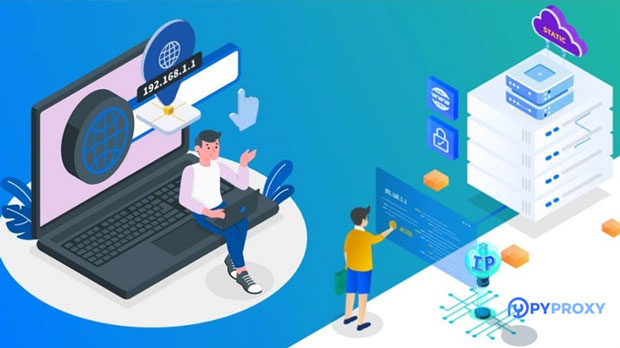In the world of internet proxies, choosing the right service can significantly impact the quality of your online operations. When comparing proxy providers like PYPROXY and Infatica, the question of which offers better IP quality is crucial for businesses, digital marketers, and anyone reliant on proxy usage for data scraping, automation, or privacy protection. Both services are known for their extensive networks and promising features. However, the core question remains: which provider delivers higher-quality IPs that can ensure smoother and more reliable browsing? This article will delve into a detailed comparison of both services, analyzing their strengths, weaknesses, and how they stand in terms of IP quality. Understanding Proxy Quality: The Importance of IP QualityBefore comparing PyProxy and Infatica, it's important to first understand what constitutes "IP quality." In proxy services, IP quality refers to the reliability, anonymity, speed, and authenticity of the proxy server's IP address. A high-quality proxy ip is one that offers stability, is less likely to be blocked or blacklisted, and provides fast connection speeds. Additionally, a good proxy should also help in maintaining user privacy without compromising security.When choosing between proxy services like PyProxy and Infatica, evaluating the quality of their IP pools is essential. Poor-quality proxies can result in slower connections, frequent interruptions, or getting blacklisted by websites, which can severely affect online business operations.PyProxy: A Closer Look at Its IP PoolPyProxy is a popular proxy provider known for its extensive IP pool and various proxy types, such as residential, datacenter, and mobile proxies. Its IP pool is vast and includes a global network that spans several continents, ensuring users can access a wide variety of IPs for different needs. The core strength of PyProxy lies in its ability to provide highly anonymous proxies, which help businesses mask their real IP addresses and protect their identities online.Key Factors Contributing to PyProxy’s IP Quality:1. Residential IPs: PyProxy primarily offers residential proxies, which are IP addresses provided by Internet Service Providers (ISPs) to home users. Residential proxies are typically more secure and less likely to be blocked by websites compared to datacenter proxies. They are often seen as more legitimate and harder to detect, which enhances their quality.2. Geolocation Flexibility: PyProxy offers IPs from various countries, which makes it ideal for accessing content restricted by geography. The ability to select IPs from specific regions ensures that users can access the content they need, from anywhere in the world.3. Anonymity and Security: PyProxy focuses on offering highly anonymous proxies. This means that the service removes any identifiable information from the IP traffic, making it harder for third parties to trace the traffic back to the user. For businesses dealing with sensitive data or attempting to scrape websites without detection, this level of security is critical.However, despite these strengths, there are some limitations. PyProxy’s network, while large, may not be as fast or as stable in certain regions, especially where they have less infrastructure. Additionally, the cost of residential proxies can sometimes be a barrier for small businesses or individual users.Infatica: A Different Approach to IP QualityInfatica is another major player in the proxy market, offering a vast network of IPs for various online activities. While Infatica has a similar offering to PyProxy, there are some unique aspects of their service that differentiate them, particularly when it comes to the quality of their IP pool.Key Factors Contributing to Infatica’s IP Quality:1. Global IP Network: Infatica also boasts a global network of proxy servers, with millions of residential IPs sourced from different countries. Their IP pool is built to handle high-demand tasks such as web scraping, SEO monitoring, and social media automation.2. Residential Proxies: Like PyProxy, Infatica offers primarily residential proxies, which is a major advantage in terms of IP quality. Residential proxies are harder to detect and block, making them more reliable for use cases requiring high anonymity.3. Speed and Performance: One of the standout features of Infatica is its focus on providing fast and stable proxy connections. Infatica claims to offer low-latency proxies that are ideal for time-sensitive tasks such as price monitoring or sneaker botting, where speed is a critical factor.4. Dedicated IPs: In addition to shared residential IPs, Infatica offers dedicated IPs for users who need more control over their proxy usage. Dedicated IPs are not shared with other users, which ensures more stable and reliable connections, especially for long-term projects.On the flip side, Infatica’s proxies might sometimes face issues in specific regions where the demand is high. While they are known for offering fast speeds, there may be occasional slowdowns, especially in locations where their infrastructure is not as robust.Comparison of IP Quality: PyProxy vs. InfaticaWhen comparing the two services, several factors must be considered, particularly in terms of IP quality. Both PyProxy and Infatica offer strong IP pools, but each excels in different areas.1. IP Authenticity and Legitimacy:Both PyProxy and Infatica provide residential proxies, which are generally considered more authentic and harder to detect. However, PyProxy’s extensive focus on residential proxies across multiple regions gives it a slight edge in terms of IP legitimacy. Their residential IPs are less likely to be flagged or blocked by websites due to their appearance as regular user connections.2. Speed and Stability:While both services offer high-speed proxies, Infatica is often praised for its superior performance in terms of speed and latency. Their focus on providing fast and reliable proxies makes them a better choice for tasks requiring high bandwidth, such as scraping large volumes of data or running automated bots.3. Global Reach and Geolocation:Both PyProxy and Infatica have global IP coverage, but PyProxy stands out in its flexibility to choose IPs from a broader range of locations, which is crucial for users needing to access geo-restricted content. Infatica, however, has a strong presence in specific regions like Europe and North America.4. Cost-Effectiveness:Cost is an important consideration, especially for small businesses or individual users. PyProxy tends to be more expensive due to its focus on high-quality residential proxies, which can be a significant investment for users with a smaller budget. Infatica, on the other hand, tends to be more cost-effective, offering competitive pricing for both residential and dedicated proxies.Which Proxy Service Offers Higher IP Quality? ConclusionBoth PyProxy and Infatica offer high-quality IPs with their residential proxy networks, but they cater to different user needs. PyProxy is ideal for users who prioritize security, anonymity, and access to a broad range of global IPs. Infatica, on the other hand, excels in speed, performance, and affordability, making it a strong choice for users requiring fast, reliable proxies for high-demand tasks.Ultimately, the decision between PyProxy and Infatica depends on the user’s specific requirements. If IP legitimacy and privacy are top priorities, PyProxy may be the better choice. However, if speed, cost-effectiveness, and a fast-performing proxy network are more important, Infatica may offer a better overall value.
Mar 28, 2025
![arrow]()




























































